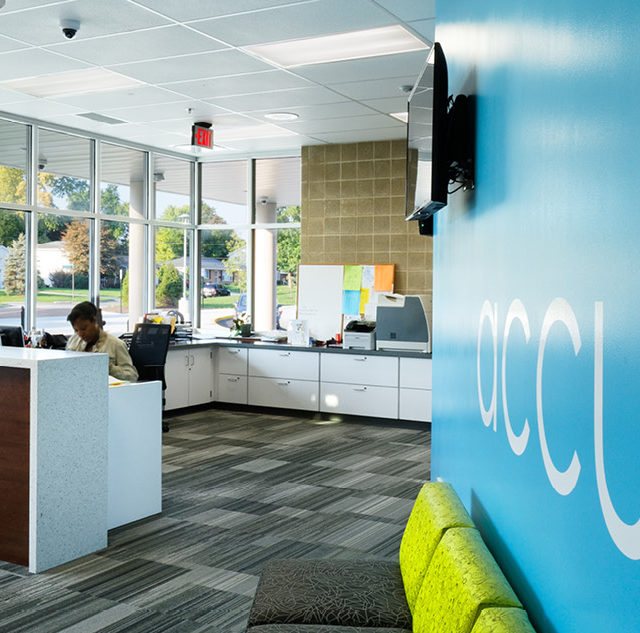Insights
The Role of Design in School Safety
By
We have all been deeply affected by the violence occurring in American schools. Whether the single-shooter tragedies that have gripped our emotions, or bullying that occurs day to day, these incidents collectively compound our national sense of unease.
In the outcry and subsequent political debate about what action to take, school design remains an essential part in improving the safety of our students.
Evolving safety concepts
While no single solution can prevent these incidents with absolute certainty, a strategic facility design coupled with vetted operational protocols can dramatically increase school security. And while cost cannot be the primary concern when considering the safety of our children, it is possible to achieve better results within established project budgets through a synergy of design and operations that preserves learning as the focus of the building.
At Fanning Howey, we employ the precepts of Crime Prevention Through Environmental Design (CPTED) in the design of new and renovated school facilities. The foundation of this concept is to discourage potential attacks by controlling access to the site and building, and providing the ability to visually observe all occupied areas. This continues to evolve through an ongoing dialogue between parents, educators, law enforcement officials and architects.
Access and observation
The concept starts with concentric rings of access to the site, with vehicles designated to the outer zones, while allowing people to access activity areas and the building itself. In the next ring, we design zones of controlled access within the buildings themselves for students, staff and any approved visitors.

Entrance to a school should be funneled to as few carefully monitored access points as possible, while leaving multiple emergency exits in the event of an incident. “One way in, many ways out” is the philosophy.
Access points are further controlled by active electronic systems, such as security doors that must be opened by a member of the school staff or security. The innermost portions of the school are the most secure onsite, allowing students and teachers who can’t flee outside to shelter in place, providing more time for first responders to apprehend the attacker.
Visual observation is the other key. Video cameras are deployed everywhere, with clear lines of sight to observe virtually everyone inside and outside the facility. The exterior of the school also plays a role in the design, with no large structures and only low-lying vegetation permitted next to the exterior walls. This, along with properly placed and secured windows, makes it harder for a trespasser to approach in stealth.
Active and passive prevention
The school’s design should incorporate a marriage between passive and active security strategies. Passive design refers to strategies built into the school, such as limited entrances and building zoning, while active design implements technologies such as security doors, designated staff members equipped with distress buttons that can initiate a lockdown sequence, video cameras and specialized wireless networks that allow first responders to communicate unimpeded amongst themselves and with onsite staff during a lockdown.
Metal detectors are another example of active prevention, but present their own challenges. Passing one student through a metal detector every five to ten seconds can result in a large backlog of children waiting outside of the school to get in, leaving them vulnerable. Metal detectors must also be monitored by qualified staff to ensure their effectiveness. Sometimes the risks can outweigh the benefits. That’s why Fanning Howey works with each school to develop a customized security design approach based on their culture and practices.
It is impossible to understate the need to have a safe and secure environment for students and educators. Schools should be a safe haven for learning and nurturing growth. To avoid a bunker mentality, discussion of safety and security strategies must happen as early as possible during the design of a new school or the renovation of an existing one.
With the right security measures, operational protocol and specialized design, we can retain the joy of learning that should be at the center of every school, while providing strong protection against those who seek to harm our most precious commodity.
Designing School-Based Health Centers
By Dan ObrynbaSchool-based health centers are becoming integral components of public schools, primarily serving the needs of students and staff, with the potential to also serve the broader community. School-Based Health Centers are usually run by separate
Full ArticleEsports Facilities for Student Engagement
By Steven HerrAs competitive esports becomes a viable career path, educators across the country are embracing these gaming trends and expanding esports programming at their schools. Schools that have adopted esports are already seeing the benefits. According
Full ArticleSmart Schools Roundtable: School Safety by Design
By Zachary SprungerThe tragedy at Robb Elementary School in Uvalde, Texas, has once again brought the issue of school security into the national conversation. In 2020, Fanning Howey hosted a school security webinar featuring Michael Dorn, Executive
Full Article